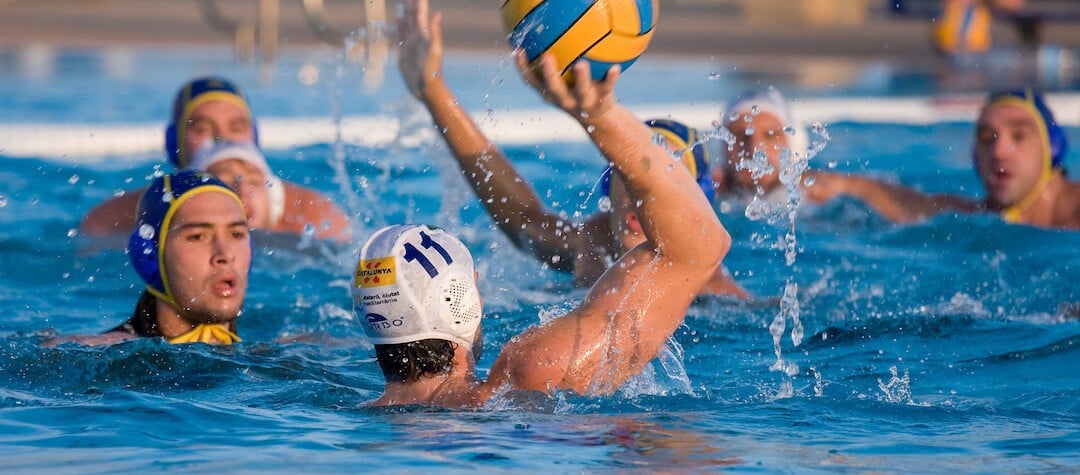Make sure you read up on the rules of water polo before donning your swimming cap and taking to the water.
Many of the rules of water polo are similar in many respects to basketball – with fouls, free throws, and time limits for shooting among some of the main similarities. Find out about the general rules of water polo including ordinary fouls, major fouls and personal fouls.
General rules of water polo
- Water polo players in possession of the ball can pass the ball forwards, sideways or backwards.
- Water polo players must tread water and are not allowed to touch the bottom of the pool – with the exception of the goalkeeper.
- The ball can be advanced by passing with one hand or swimming with the head above the water and the ball between the arms so that it rides on the wave created by the swimmer (which is called ‘dribbling’).
- The ball can only be handled by one hand at a time in water polo – with the exception of the goalkeeper, who can use both hands.
- There is no real offside rule, except within 2m of the opponent’s goal line.
- Water polo teams have 30 seconds from gaining possession in which to shoot. If this time expires, then the ball is passed over to the opposition.
Fouls in water polo
Fouls are common in water polo, and referees really have to have their wits about them due to the amount of infringements that can take place out of view under the water. There are three types of fouls in water polo: 'ordinary fouls', which account for the vast majority of whistle stops during a game; 'major fouls'; and 'penalty fouls'.
Ordinary fouls include:
- Touching the ball with two hands (with the exception of the goalkeeper).
- Taking the ball under water when tackled.
- Impeding an opponent who is not holding the ball.
- Pushing off an opponent.
- Failing to shoot or advance the ball within 30 seconds.
When the referee calls an ordinary foul, the offended water polo team is awarded a free throw at the point of the foul.
Major fouls (also called exclusion fouls or personal fouls) include:
- Kicking or striking.
- Deliberate splashing in the face.
- Interfering with a free throw.
- Misconduct or disrespect to the referee.
- Holding, sinking or pulling back an opponent who is not holding the ball.
Major fouls may result in a water polo player being sent out of play for 20 seconds. A player receiving three major fouls is removed from the game by substitution.
Deliberate kicking or striking an opponent results in the permanent sending off of the offending player.
Personal fouls in water polo
Some infringements occurring within the 5m zone can result in the award of a penalty foul, if the referee deems the foul has prevented an almost certain goal. The water polo player taking the penalty throw has a free shot at the goal from the 5m line, with only the goalie defending.
Picture Credit: Natursports / Shutterstock.com














